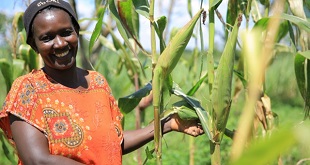The local council is also overwhelmed by the cleaning needed, mostly of Kaveera, as the day’s celebrations often spill over beyond the Shrine and into neighbouring towns of Kira and Naalya. Here, the celebrations morph into a carnival-like atmosphere complete with revelers guzzling booze and roast meat Nyamachoma for days.
The church has noted the threat posed by ‘Kaveera’ to human and animal health, and integrity of creation as a whole. In a statement by Bishop Zziwa, the organizers said concern about the magnitude of ‘Kaveera’ dropped in around Namugongo every year led to the ban on Kaveera at the Shrines.
“As citizens and partners in the development of Uganda, we are inspired in this initiative by the current global campaigns against environmental degradation,” Bishop Zziwa said.
The organizers are encouraging the clergy to spread this information through the various media available to them, including announcements during Holy Mass at various parishes around the country. They hope this will ensure pilgrims arrive without kaveera.
Green bins will, however, be provided for disposal of ‘Kaveera’ for those who might have forgotten and come with them for any reason.
Government support lacking
The Namugongo campaign is exciting because efforts to control the production, use, and disposal of kaveera have been tough and fruitless. The government banned kaveera production and use several years ago but the ban is not enforced and kaveera is still in wide use.
According to NEMA, close to 40 million kilogrammes of polythene bag waste is released into the environment every year.
Although a ban on disposable polythene bags has officially been active since April 2015, it has met several challenges, mainly from local manufacturers and importers who have insisted on having consultations. Those so-called consultations have gone on indefinitely.
In April, 2015, NEMA tried to enforce the ban on light weight carrier bags usually given to customers in shops and supermarkets. The ban also applied to the importation, local manufacture, sale or use of polythene carrier bags but would exclude polythene packaging materials for use in agriculture, industries, medicine, research and science, sanitation, construction and exports.
It also directed manufacturers and distributors to establish polythene collection centres across the country and intensify public sensitization on polythene waste management.
NEMA and other environmentalists insist manufacturers should consider the millions of farming-related jobs that thrive when the soils are not damaged by kaveera. Scientists say when kaveera is burnt in the open; especially under low temperatures; it creates dioxin-like poisonous substances which cause cancer, skin diseases, endocrinal damage, hormone disruption, hyper tension and human infertility.
But ‘Kaveera’ manufacturers through their industry lobby, the Uganda Plastics Manufacturers and Recyclers Association (UPMRA) have in the past told The Independent that as long as the government has not ordered them to stop; they will not stop manufacturing the legally accepted gauge of polythene bags of above 30 microns.
They claimed that in any case a ban in Uganda would always be ineffective since 80% of the product comes from neighbouring Kenya.
When Kenya implemented a ban on the manufacture, sale or use of the single-use plastic bags popularly, Ugandan environmentalists expected the Ugandan ban would be strengthened. It was not.
Instead sources familiar with the on-and-off negotiations surrounding kaveera told The Independent that President Museveni has been reluctant to support the implementation of the ban thanks to the potential spin-offs of the petroleum industry that is expected to materialize around 2022.
Uganda hopes to produce petroleum by then and several industries that produce by-products are expected. That includes plastics manufacturers.
As a result, NEMA has since been slow on enforcing the ban on polythene carrier bags. Instead, environmentalists have sought to empower the population with the information on the health hazards that come out of using kaveera.
Gilbert Assi, the Managing Director of Vivo Energy Uganda, one of NEMA’s partners in the campaign says the Namugongo campaign is part of efforts to get Ugandans “to make informed decisions about their use or rejection of Kaveera”.
“Kaveera clogs drainage systems, streams, and channels costing the local authorities a great deal of their budgets to manage this challenge; it impacts on human health as it is known to emit cancer-causing particles through fumes ingested when kaveera is burned,” he says.
Okurut said NEMA hopes the Muslims will join soon following the meeting NEMA had with the Inter-religious Council. He said NEMA is targeting religious bodies because “this is where the people are.” Zziwa said in the coming years, the ban kaveera initiative will be extended to other Catholic shrines.
But Isaac Kabongo, the executive director of the Ecological Christian Organisation told The Independent that although NEMA is trying to build new partnerships with the church; the impact will be limited because NEMA lacks the will to implement the total ban of Kaveera.
****
 The Independent Uganda: You get the Truth we Pay the Price
The Independent Uganda: You get the Truth we Pay the Price



